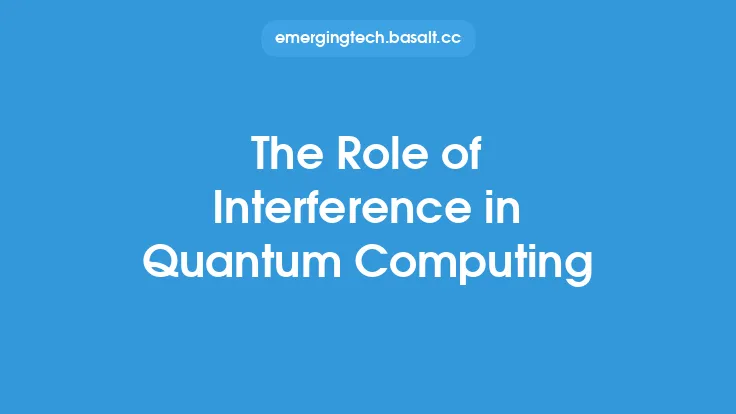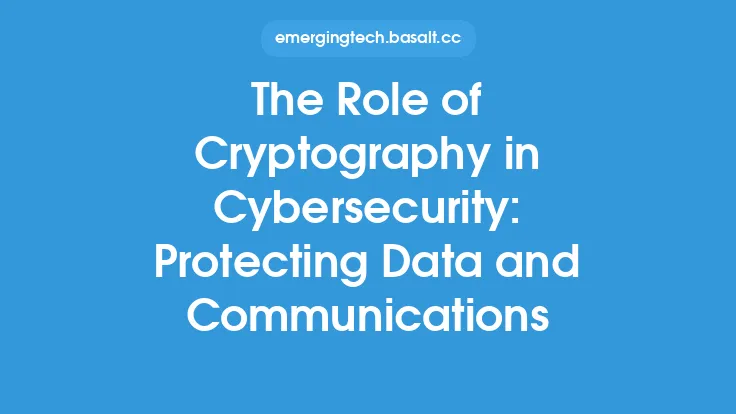Quantum information is the fundamental currency of quantum computing, representing the raw material that quantum computers process and manipulate to perform calculations and operations. At its core, quantum information is based on the principles of quantum mechanics, which describe the behavior of matter and energy at the smallest scales. Quantum information is encoded in quantum bits, or qubits, which are the quantum equivalent of classical bits. Unlike classical bits, which can only exist in one of two states (0 or 1), qubits can exist in a superposition of both states simultaneously, allowing for the processing of vast amounts of information in parallel.
Introduction to Quantum Information
Quantum information is a multidisciplinary field that draws on concepts from physics, mathematics, and computer science. It is concerned with the representation, manipulation, and transmission of information using the principles of quantum mechanics. Quantum information is based on the idea that information can be encoded in the quantum states of particles, such as electrons or photons, and that these states can be manipulated and processed using quantum gates and other quantum operations. The study of quantum information has led to the development of new quantum algorithms, such as Shor's algorithm and Grover's algorithm, which can solve certain problems exponentially faster than classical algorithms.
Quantum Information and Quantum Computing
Quantum computing is a new paradigm for computing that uses the principles of quantum mechanics to perform calculations and operations on quantum information. Quantum computers are designed to process quantum information in a way that is fundamentally different from classical computers, which are based on classical bits and classical logic gates. Quantum computers use quantum gates, such as the Hadamard gate and the CNOT gate, to manipulate qubits and perform quantum operations. These operations can be combined to create quantum algorithms, which can solve a wide range of problems, from simulating the behavior of molecules to optimizing complex systems.
Quantum Error Correction and Quantum Information
One of the major challenges in quantum computing is the problem of quantum error correction. Quantum information is inherently fragile and prone to errors, due to the noisy nature of quantum systems. Quantum error correction is the process of detecting and correcting errors that occur in quantum information, and it is essential for large-scale quantum computing. Quantum error correction codes, such as the surface code and the Shor code, are used to protect quantum information from errors and to ensure that quantum computations are reliable and accurate. These codes work by encoding quantum information in a redundant way, so that errors can be detected and corrected using classical error correction techniques.
Quantum Information Processing and Quantum Control
Quantum information processing is the process of manipulating and controlling quantum information to perform quantum computations. This requires a high degree of control over the quantum states of qubits, as well as the ability to manipulate these states using quantum gates and other quantum operations. Quantum control is the process of controlling the quantum states of qubits, and it is essential for quantum information processing. Quantum control can be achieved using a variety of techniques, including pulse shaping and quantum feedback control. These techniques allow for the precise manipulation of qubits, and they are essential for the implementation of quantum algorithms and quantum error correction codes.
Quantum Information and Quantum Entanglement
Quantum entanglement is a fundamental property of quantum mechanics, in which two or more particles become correlated in such a way that the state of one particle cannot be described independently of the others. Quantum entanglement is a key resource for quantum information processing, as it allows for the creation of quantum correlations between qubits. These correlations can be used for quantum teleportation, superdense coding, and other quantum information processing tasks. Quantum entanglement is also a key component of quantum error correction codes, as it allows for the creation of quantum correlations between qubits that can be used to detect and correct errors.
Quantum Information and Quantum Superposition
Quantum superposition is another fundamental property of quantum mechanics, in which a quantum system can exist in multiple states simultaneously. Quantum superposition is a key feature of qubits, as it allows for the processing of multiple possibilities in parallel. Quantum superposition is also a key component of quantum algorithms, such as Shor's algorithm and Grover's algorithm, which rely on the ability to manipulate qubits in a superposition of states. Quantum superposition is also a key component of quantum error correction codes, as it allows for the creation of quantum correlations between qubits that can be used to detect and correct errors.
Conclusion
In conclusion, quantum information is a fundamental aspect of quantum computing, representing the raw material that quantum computers process and manipulate to perform calculations and operations. Quantum information is based on the principles of quantum mechanics, and it is encoded in qubits, which can exist in a superposition of states and become entangled with each other. Quantum error correction is a critical component of quantum computing, as it allows for the detection and correction of errors that occur in quantum information. Quantum information processing and quantum control are essential for the manipulation and control of quantum information, and they rely on a high degree of control over the quantum states of qubits. Quantum entanglement and quantum superposition are key resources for quantum information processing, and they are essential for the creation of quantum correlations between qubits and the manipulation of qubits in a superposition of states. As quantum computing continues to evolve and mature, the study of quantum information will remain a critical component of this field, driving innovation and advancement in the years to come.





